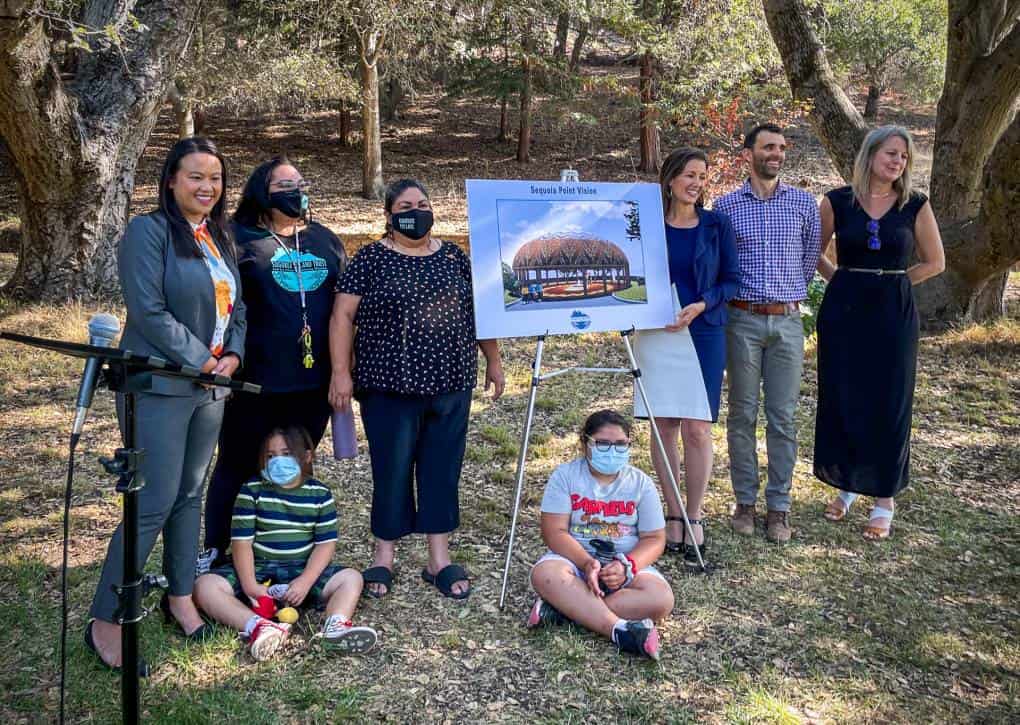Alameda Native History Project has a standing policy to never contact or involve Tribal Members or Tribes unless there is a clear and tangential Tribal Benefit To Participation.
Truthfully, the reason why this policy was set was mostly out of respect for the lived experiences of the Tribal Members of the Muwekma Ohlone Tribe of the San Francisco Bay Area.
And as a direct response to the continuing tokenization and empty promises of non-indigenous corporations, governments, and individuals who seek to monetize the appearance of Indigenous People at their events, solely for the exclusive benefit of the hosting organization/corporation.
And, while people like Corrina Gould are more than happy to take a check for their appearance, and play the part of a Tribal Chairperson; the real Indians–bona fide Native Americans–actual, self-respecting Indigenous People–will likely never respond to these invitations.
Because Land Acknowledgements don’t mean shit to someone looking across the sea of pale faces who now occupy their tribal territory, destroy their tribal homelands, and want us to acknowledge that this land is stolen by the very same people who are giving us these false platitudes and empty promises.
I mean… really… how do “well-meaning”, “progressive”, non-indigenous people manage to come up with more and more ritually ridiculous ways to re-traumatize a group of people they tried to murder, and wipe off the planet?
And they think letting us tell them they’re thieving, murderous interlopers is doing us a favor? No, Land Acknowledgments are yet another song and dance indigenous people are being expected to perform (for free) to put white people at ease.
The earliest examples of the Land Acknowledgment ritual goes back to Australia in the form of a “Welcome to Country” ritual, which is meant to put newcomers at ease, in order to form a friendly relationship between indigenous people, and their visitors, so mutually beneficial exchanges can begin between the two groups.
[Read that as: Welcome to Country rituals were created by aboriginal people to appease white people, and put them at ease in order to foster an exploitive/extractive interaction which didn’t result in aboriginal people being massacred; yet. See also: Dear White People, and, What It Means to Be Unapologetically Black, to understand why “putting white people at ease” is even a thing.]
Mind you, every interaction with white people during the “Discovery Era” was exploitive and extractive; and, of course, only benefitted the colonizer with free food, riches, labor, etc.
It’s important to note the similarities between the intent of both Aboriginal Australians, and Indigenous, and First Peoples of the Americas, when meeting newcomers.
In a very American context: Native Americans dancing exhibitions commonly occurred at Forts and Missions to appease visiting dignitaries and military officials; and were another way for indigenous people to ensure their ongoing survival. By making their captors look good in front of their superiors, and put white people at ease in doing so. [“Look how well he commands the savages under his control!”]
Veritably, the white-washed version of the “discovery” and “founding” of America includes references to the “First Thanksgiving” as a celebration of how Native people “helped” white people to survive a place these Colonizers knew nothing about, and would have perished in, if left on their own.
The clean, anesthetized, version of White History yields so many selfless examples of Indigenous generosity and kindness.
And demonizes the audacity of indigenous people who object to the taking of their land, destruction of their resources, and kidnapping, enslavement and abuse, and murder, of their people.
Such examples of White-Washed History include:
- “The Indians gave us their food so we could live,”
- “The Indians agreed to move off their land so we could build our cities,”
- The Indians agreed that white people were superior, and decided to learn their language, religion, and culture, so they could finally abandon their dirty, heathenness savagery and live clean and pure, like God intended.
It’s all so guilt free.
White History carries with it a sense of smugness and blamelessness, which purports to release all white people, all colonizers (and their descendants), of the liability for their damages, ill-doings, and complicity, in what today are called War Crimes, and Crimes Against Humanity….
And Land Acknowledgments are just another way to side step “all of that ugliness.”
Using Indigenous People to perform Land Acknowledgments gives white people another way to avoid acknowledging the ugliness of their ancestors. Because it makes us apologize for them, for everything they did, including stealing our land.
Even worse, Indigenous People giving Land Acknowledgments can sometimes give corporations and organizations the green light to continue desecrating sacred land, exploiting natural resources, and completely disregard indigenous people from that point on because we already apologized for them.
And, even more worse than that: when indigenous people give headdresses out to people like The Pope: it really signals absolute forgiveness for something which white people haven’t even begun to admit to, much less atone for; and releases them from the burden of ever performing a genuine confession, reconciliation and/or atonement.
Most of the time, Land Acknowledgments are used in the place of real soul-searching, and a meaningful truth and reconciliation process.
When pressed, organizations will fess up pretty quickly:
“We didn’t invite you here to acknowledge the wrong-doings of our ancestors, or the continuing injustices against Native Americans we commit, or are complicit in….
“We really just wanted someone with shell jewelry and feathers to burn sage, give a blessing–and play the part of what we believe an idealized Native American should look like, so we can check that box on our Diversity Equity and Inclusion component for this year….
“We didn’t actually mean to do any work.“











































